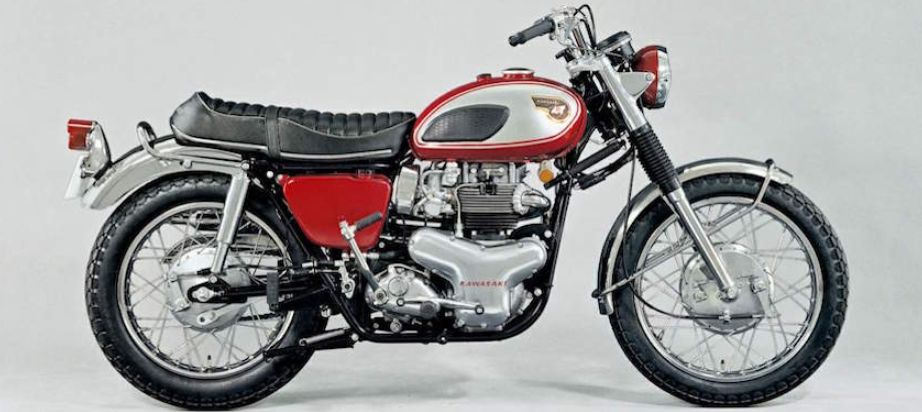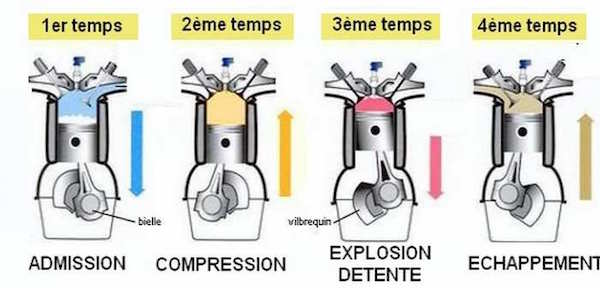

So, what exactly is a 4-stroke engine? Far more complex than the 2-stroke engine, the 4-stroke engine also has many advantages! More torque, lower fuel consumption, less pollution, and less wear on moving parts...
In terms of feel on the track, the 4-stroke engine has much more torque, which is characterized by faster engine response during acceleration.
The characteristic noise of the 4-stroke engine resembles that of a large hornet, whereas the 2-stroke is more akin to the sound of a bee trapped in a tin can!
The rider can afford to run a gear higher and still be more efficient on the track. More torque means more traction! In fact, the 4-stroke engine has more grip, which makes it easier to ride depending on the surface...
To put it simply, a beginner will feel more at ease on a 4-stroke, as it erases any steering errors.
Moving on to the engine, we've kept things as simple as possible to give you an idea of how it works.
The explosion principle is the same, with a piston compressing the air/fuel mixture. The spark plug once again takes charge of the explosion, pushing the piston back, which in turn moves parts such as the crankshaft, which participates in the transfer of movement with the entire mechanical system.
To begin with, you need to know that ignition (spark plug) takes place once every two revolutions (the piston has to go up and down 2 times for 1 spark from the spark plug).
Why 4 strokes?
Stroke 1: intake
Stroke 2: compression
Stroke 3: explosion
Stroke 4: exhaust

First of all, a 4-stroke engine has valves to allow the entry and exit of gases before and after the explosion. So there's an intake valve to let the air/fuel mixture in, and an exhaust valve to let the spent gases out. When the piston is in the down position, the intake valve opens, allowing the air/fuel mixture to enter the cylinder (Stage 1).
After this stage, the intake valve closes as the piston begins its ascent phase to compress the gases (stroke 2).
Once the gases have been compressed (piston up + valves closed), the spark plug emits a spark to create an explosion with the air/fuel mixture. (Step 3)
The energy generated by the gas explosion exerts pressure on the piston, which returns to its lowered position. The inertia generated allows the piston to rise again. At the same time, the exhaust valve opens to evacuate the spent gases that will find their way out of the exhaust pipe. The cycle then repeats itself...
2-stroke and 4-stroke engines operate differently, which has repercussions on the way they are driven. A 2-stroke engine needs to be driven at higher revs, whereas a 4-stroke engine needs to focus on engine torque to be efficient.
Pipe (it's the right word):
They can also be identified by their exhaust pipes. The 2-stroke muffler is often angled for greater responsiveness, while the 4-stroke muffler is a straight tube running from the engine to the cartridge.
There's something for every taste, every age and every budget! 2-stroke or 4-stroke, it doesn't matter what the bottle is, as long as you get drunk, right? Have fun and enjoy the ride!
PS: I'd be delighted to answer any questions you may have in the comments forum. If you liked the article, please share it with your biker buddies - it means a lot to us!
Thanks ;)
Our last posts
#interviewmotarde #etonvaoumaintenant #motardevoyageuse #voyagemoto
#hivernale #millevaches #équipementmotard #aventuresmichel
#aventuresmichel #hardefitour #raidenduro #tout-terrain
Aucun produit
